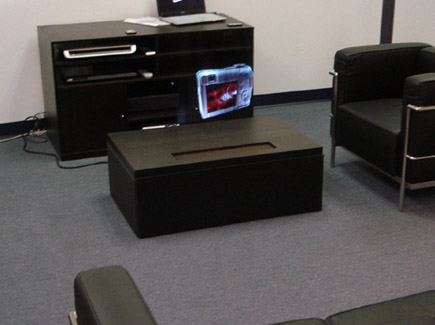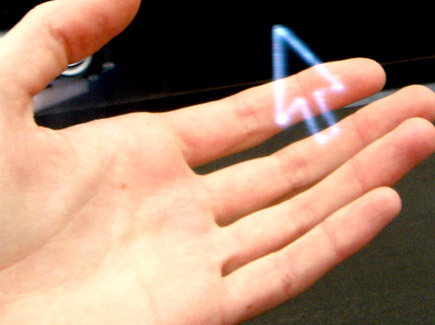Blog of Wishes
A Blog for Cool Gadgets, Smart Things and New Products…
Search
Archive for the ‘Cool Gadgets’ Category
Customer Service
26, Jun 2006Customer service is often at the heart of a business , and if a website isn’t up to the task of handling online inquiries, a client might simply be not interested in spending more time with them. This is what the FAST approach will aim to address.
The idea is to quickly and easily get to the point of getting to know the customer,businesses need to build customer relationships
While the customer service component of the FAST approach may appear to be fairly straightforward at first glance, it is actually quite challenging and complex in practice.
At first, FAST will seek to gain a basic understanding of the customer’s goals and wants. But to do so, you must be able to answer two questions: 1) what is the customer trying to achieve with the company, and 2) what type of person is this person likely to be? To answer the first question, FAST will ask a series of question designed to understand the customer’s personality, goals, personality traits and preferences.
The second question can be asked when the customer approaches you in a conversation or when a product or service is provided to the customer. At this point FAST needs to look for certain criteria that appear to have an impact on the customer’s life, such as: the importance of the individual, how the customer views their job role and the business, the frequency of the interaction, etc. It will then start to draw up a profile of the customer, as well as the features, potential risks and advantages of the product or service that you are providing to the customer.
4. Use customer profiling to understand customer’s needs, identify customer needs & then design the product or service that aligns with them
By understanding the customer’s needs and identifying what they are looking for you can design the product or service that best suits their needs. You also need to take into account all the different parts of the customer’s life, including personal, business and work life.
4.1. Use insights from customer profiling to design and test a product or service To make sure your product is a good fit for your customer, firstly you need to know what they need. This is called the user profile. The purpose of a user profile is to identify the users’ personal and work needs. You then need to test and improve the product or service to identify which areas are most important. What is important for a customer to be able to do on your product or service? This is why customer profiling is extremely important. It allows you to test the product for the most important functions.
Customer profiling helps you test how to do things.
In a market with high prices, and a huge selection of products and services, many companies struggle to sell to their customers. This is because their products or services are so similar to those of the competition. This leads to a very slow sales rate.
The challenge when you want to solve a problem in the market is that there is a lot of information to be collected. So, it is very common to use customer profiling to test your product and services.
Customer profiling helps you to test your product and services. In a market with high prices, and a huge selection of products and services, many companies struggle to sell to their customers. This is because their products or services are so similar to those of the competition. This leads to a very slow sales rate. The challenge when you want to solve a problem in the market is that there is a lot of information to be collected.
- In: Cool Gadgets
- Tags: gsm, mobile phone, sidekick 3, smartphone, t-mobile
Spy Finder Hidden Camera Detector
26, Jun 2006
Are you feeling paranoid or that you’re being watched? The Spy Finder should be able to reveal the presence of any camera, Wired or wireless, even if the camera is powered off at the moment. The Spy Finder is just the size of a Bic Lighter and easily fits in your pocket. And the best of all is that it is very easy to use – just look through the viewfinder, press the button and any Hidden Camera should be illuminated and its position revealed…
Protect Yourself from Prying Eyes
Spy Finder is an easy-to-use Hidden Camera Detector. Simply look through the viewing port and scan any room to reveal the exact location of concealed Wireless and Wired Cameras. Use it in dressing rooms or gym locker rooms to protect yourself from prying eyes. Give your loved ones peace-of-mind knowing their privacy has not been compromised.
To scan an area, simply look through the viewing port and depress the button to activate the LEDs. Slowly scan areas where Hidden Cameras are suspected and look for bright-reflected spots. Remember, most Hidden Video Cameras use Pinhole Camera Lenses, so the spot you are looking for could be small.
If you see a suspected camera, move your vantage point slightly. If the location of the reflection moves as you move, then this is not a camera. If the location of the reflection does not move, then it is highly likely that you have discovered the optics of a Hidden Camera.
How it Works
The Spy Finder Hidden Camera Detector/Locator is the most reliable and easy to use technology on the market for confirming that your private actions are not being watched. The Spy Finder’s function is based on the principle of optical augmentation. This technical jargon refers to the phenomenon where light reflected from a focused optical system, such as a Video Camera, is reflected along the same path as the incident light. This means that if a Hidden Camera is illuminated and viewed with the Spy Finder Technology, then a strong reflection from the target camera will reveal its position to the user. The Spy Finder exploits this phenomenon by using a ring of ultra-bright LEDs arranged around a viewing port. When a user scans a room looking through the viewing port, a Hidden Camera appearing in the field of view will brightly reflect the light from the LEDs.
This one definitely sounds interesting, but I wonder how well it does it work finding hidden cameras…?
The price of the Spy Finder Hidden Camera Detector is $99
– Get more information about Spy Finder Hidden Camera Detector
- In: Cool Gadgets
- Tags: cammera, detecotr, hidden, personal, security, spy, spy finder
IO2 Technology’s Heliodisplay M2/M2i
22, Jun 2006

The M2-series Heliodiplay is the second-generation mid-air projector with 30-inch diagonal (76cm) display area (4:3 aspect). Heliodisplay images are unique and offer many advantages over existing displays, but the M2 is not designed as a replacement for conventional displays. Are you starting to feel like you are in a SciFi movie already?
The Heliodisplay’s projected image hovers a few inches above the unit. The top of the image is 28″ above the top of the unit. The M2 is about the size of a tower desktop computer case turned on its side. Heliodisplays will work in well-lit environments such as trade show floors, and also low-light environments such as museums and nightclubs. As with any display technology, lower ambient light makes the image easier to see.
Heliodisplay images are not holographic although they are free-space, employing a rear projection system in which images are captured onto a nearly invisible plane of transformed air. What the viewer sees is floating mid-air image or video. These projected images and video are two-dimensional, (i.e. planar) but appear 3D since there is no physical depth reference. While conventional displays have the benefit of being attached to a physical substrate, Heliodisplay projections are suspended in air, so you will notice some waviness to the quality of the projections.

The Heliodisplay is designed to be hidden (into a pedestal, table etc), so that only its projected image is visible. The display connects to a standard video source (such as DVD player or PC) and projects any images that would be viewable on a computer screen or television. No specialized hardware or software is needed to view images.

The interactive version of the Heliodisplay (M2i) allows a finger placed on the floating image to act as a computer pointing device. The user can interact with floating images or video, and manipulate them as you could with a mouse, including clicking and dragging. The M2i comes with Heliocast software and PC drivers to enable this.
Specifications
Image Size: 30″ measured diagonally (4:3 aspect)
Interactivity: Virtual Cursor Control – Heliocast ver. 2.0
Aspect Ratio: 4:3 or 16:9
Resolution: Native – SVGA 800×600 pixels; Resize Support: 640×350 to 1280×1024 pixels
Contrast Ratio: 2000:1 (at projection source)
Color Reproduction: 16.7 Million colors/ full frame video
Video Input connectors: RGB analog, USB, RCA video, S-VIDEO, VGA
Input signal frequency: Fh: 31-80kHz; Fv: 56-120Hz
Video & PC Compatibility: PC, Mac, NTSC, PAL, SECAM HDTV: 480i/480p, 720p, 1080i
Image Translucency: Controllable visibility
Operational Sound Level: 38 dB
Electric Power Voltage: 95-115 or 220-240V VAC
Electric Power Frequency: 47-63 Hz
Electric Power Consumption: 350W
Working Temperature Range: 55F (12C) to 95F (35C)
Working Humidity Range: 25% – 95%
Weight: 34.5lbs/ 15.7kg
Dimensions: (W): 28.3″, (D): 15.9″[29.8″ expanded], (H): 9.3″(71.8cm x 39.6cm [76cm expanded ] x 36cm)
Warranty: six months limited parts and labor
Heliodisplay in action
General demonstration of Heliodisplay…
Sin Episodes Emergence running on Heliodisplay…
Pricing
The Heliodisplay is still quite an expensive toy so it is definetly not for everyone and not everyone can afford it… for instance I can only dream of having a Heliodisplay, because I have to save all the money I get, and not even spend a cent, in the next five or so years to be able to afford one 🙁
If you want to buy it
+ Heliodisplay M2: $18,100
+ Heliodisplay M2i: $19,400
If you rent it for – 1 week – 2 weeks
+ Heliodisplay M2 – $9,600 – $13,800
+ Heliodisplay M2i – $12,800 – $14,800
- In: Cool Gadgets
- Tags: heliodisplay, holodisplay, hologram, holographic, interactive, io2, m2, m2i